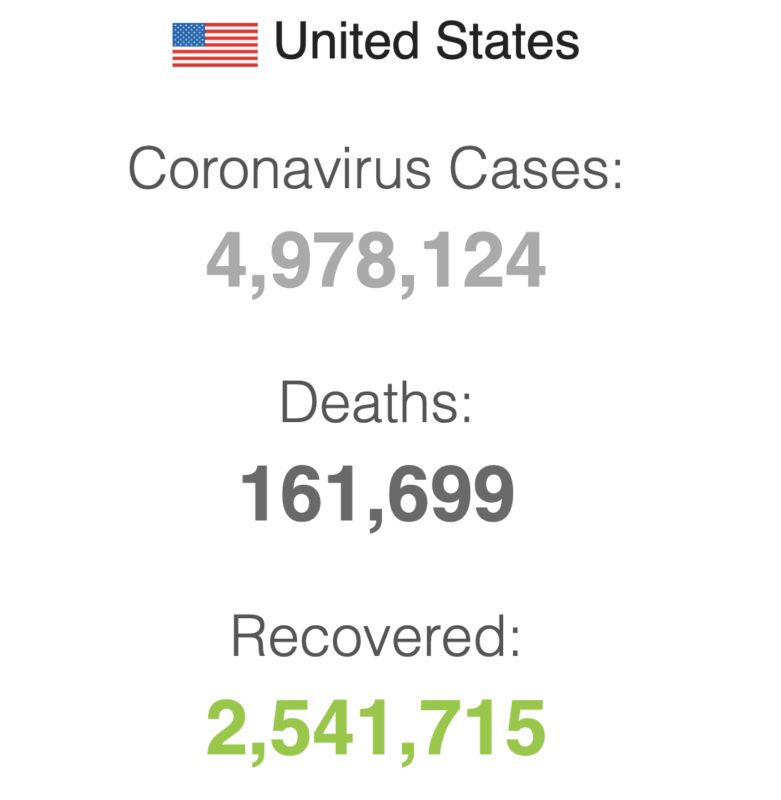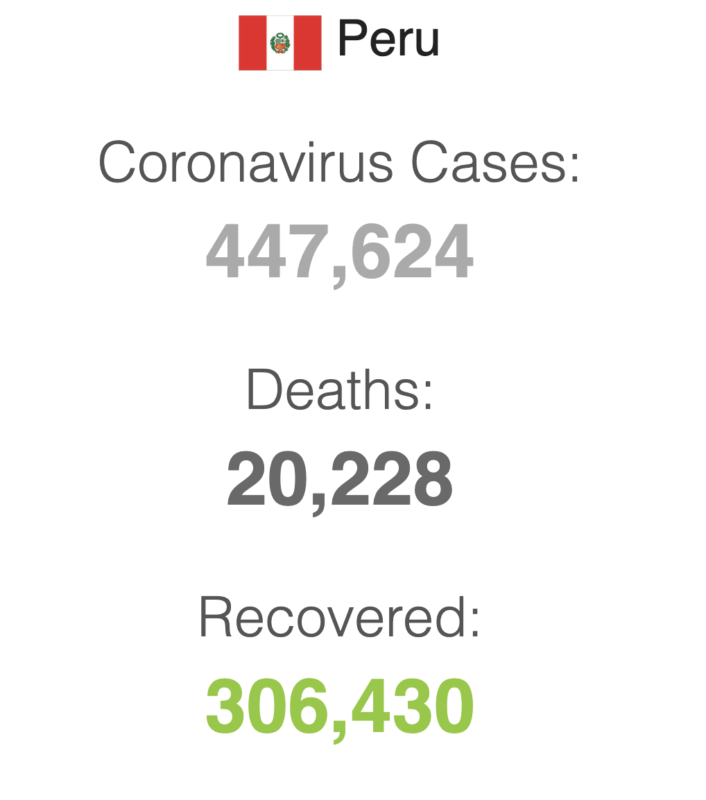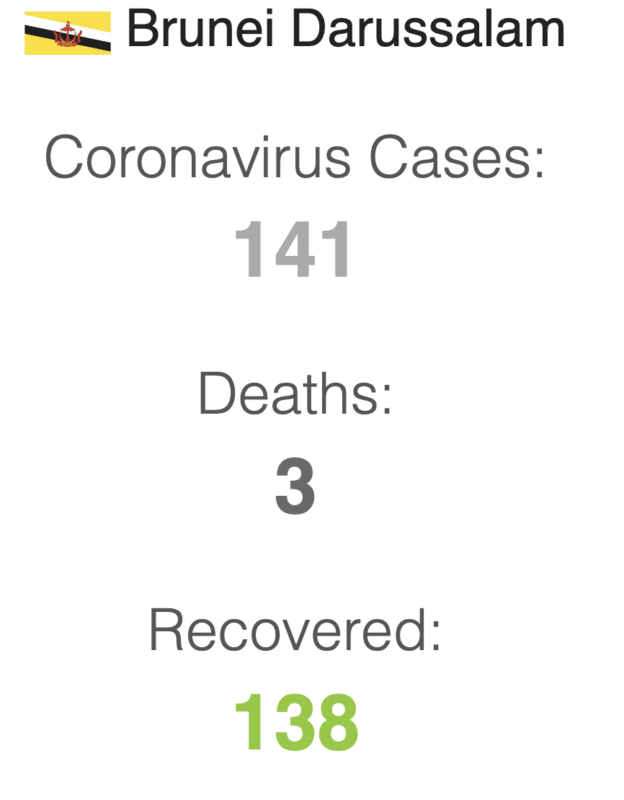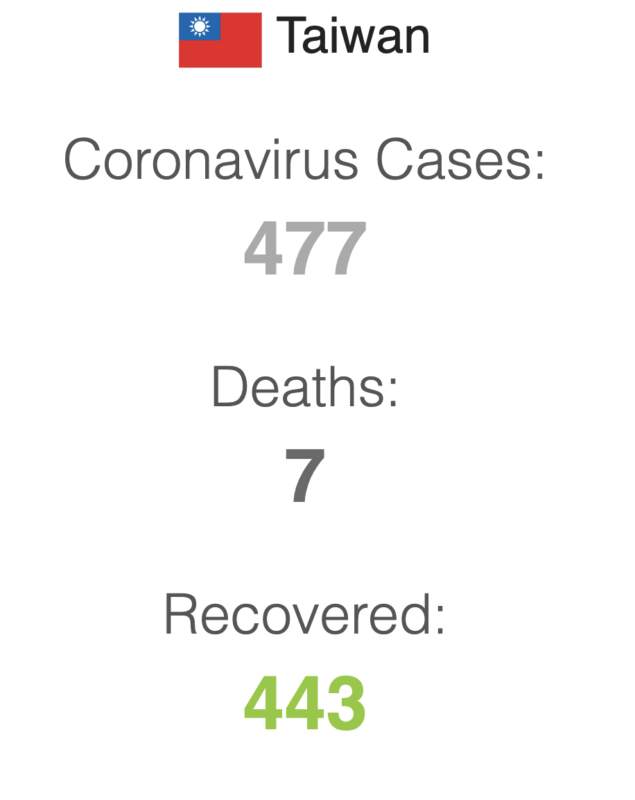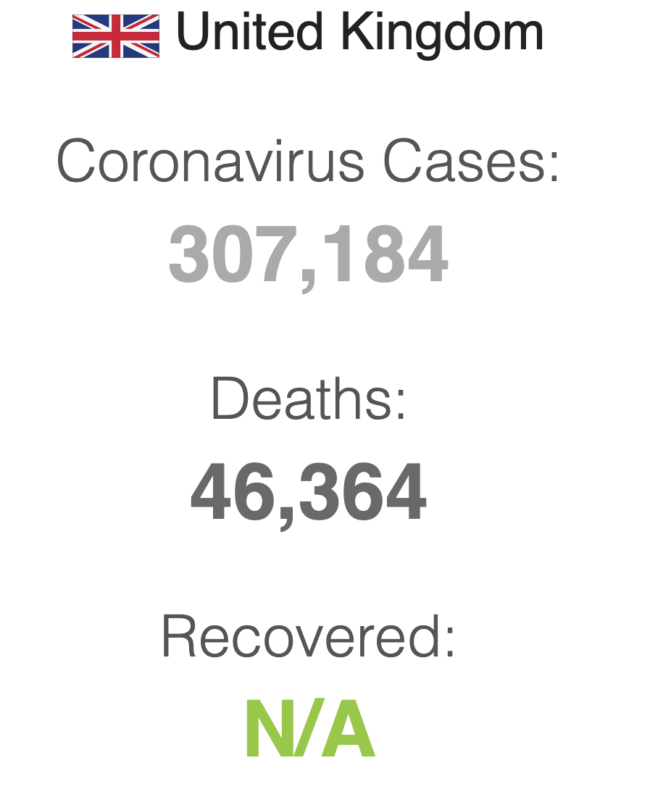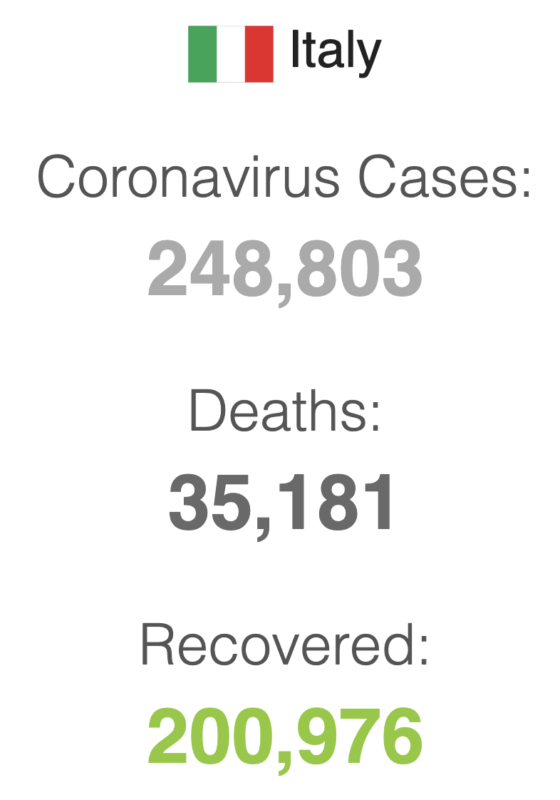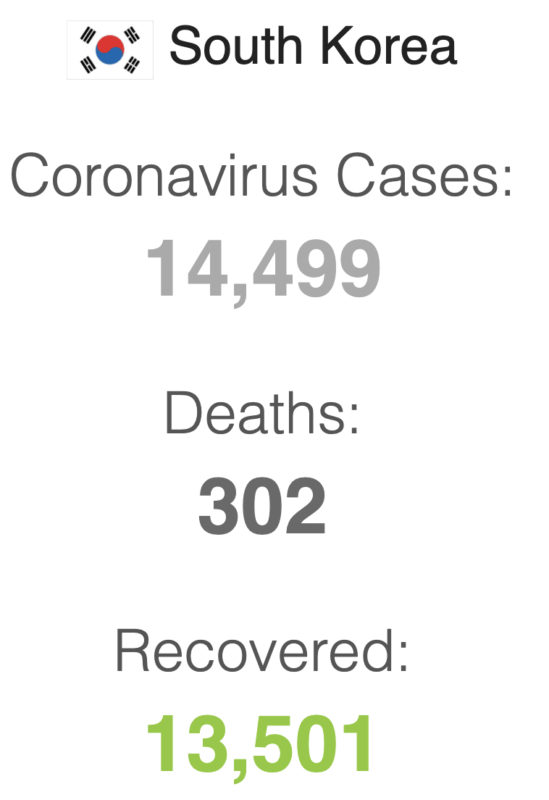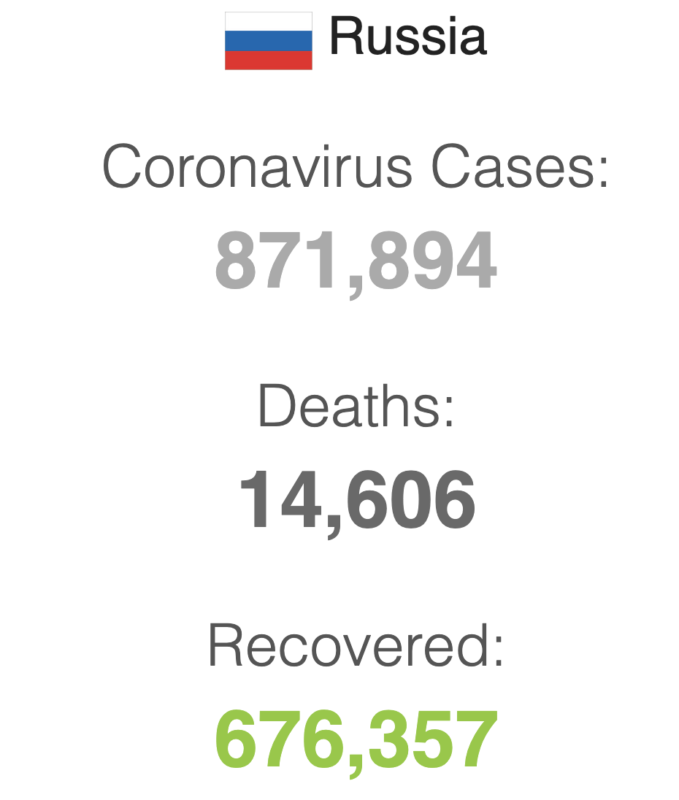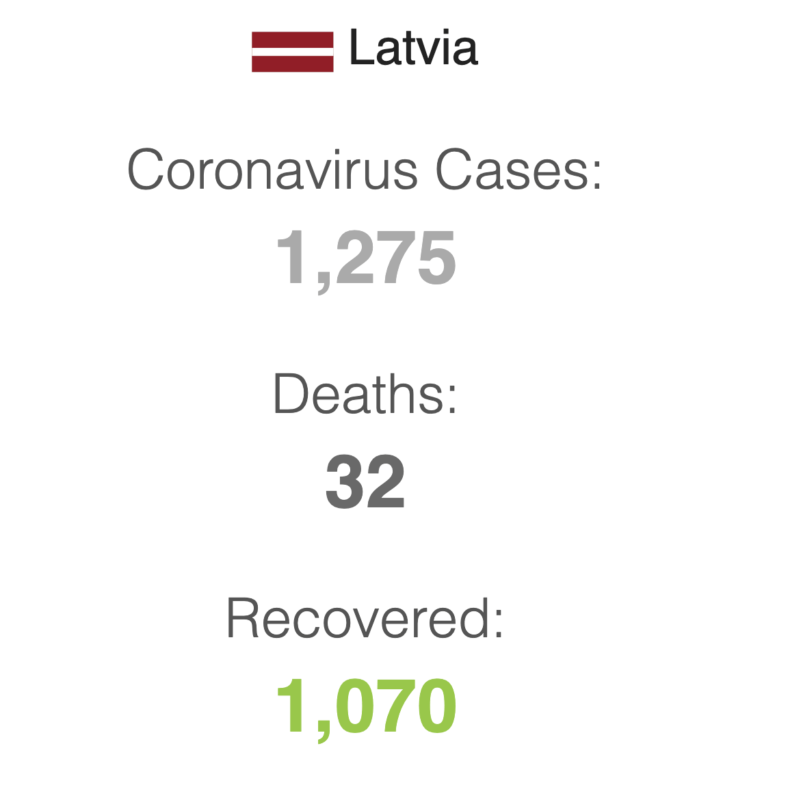Experience From Other Countries Show Lockdowns Don’t Work

The world is now seven months into the global COVID-19 pandemic. The United States has had the worst response on all counts from minimizing deaths to protecting the economy to preserving civil liberties.
As cases rise and fall across the states many governors are considering or have already reinstated lockdown measures, bringing many communities, on the verge of fully reopening, back to square one. Some health experts and advocates are even calling for the complete reset of lockdown measures, advocating for the return of stay at home orders and the “essential vs nonessential business” dichotomy.
Ironically, many of these advocates cite the success of countries such as Taiwan, South Korea, Germany, and Singapore as model pandemic responses, yet their policy proposals do not mirror those countries. If we accept the fact that the United States had one of the worst COVID-19 responses, then we should not view any of our previous lockdown policies as effective and worthy of being reinstated. Rather we should look at the policies of countries like Taiwan and South Korea and others across the world to find the commonalities that make a successful pandemic response.
What Makes A Bad Response
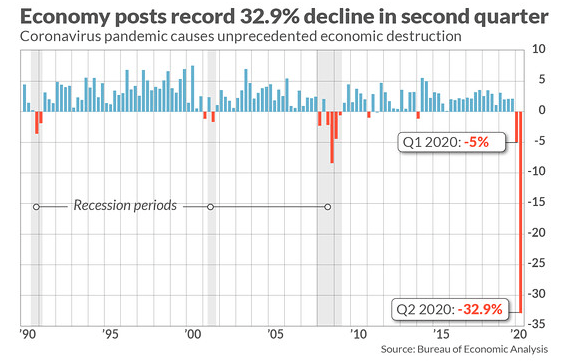
The United States has turned a manageable disease into a catastrophe. Not only does it possess one of the largest number of deaths but the economic lockdown policies led to a 32.9 percent drop in real GDP. This is in stark contrast to Taiwan whose Q2 real GDP dropped only 0.73 percent while never instituting draconian lockdown measures as well as having one of the fewest total of deaths or cases in the world.
The United States’ response left its citizens with not only more deaths, but less freedom, and crippling economic turmoil. The Taiwanese response allowed a country only a few miles off the coast of China, the epicenter of the outbreak, to continue life with relatively minimal disruptions to daily life. This minimization of death, economic calamity, and disruption to normal life should be seen as an optimal outcome. The exact opposite, high death rates, economic disaster, and social disintegration in exchange for draconian lockdown measures, should be seen as a bad response.
As governors and public health experts in the United States weigh the option of reinstating lockdown measures, we must come to terms with the fact that what we have done has been an absolute failure. Not only have policies such as stay at home orders and closing the economy failed in preventing the spread of COVID-19 or minimizing deaths, but they have also devastated the country in other ways. A good policy must be able to address and balance all aspects of society. This not only includes containing the virus but respecting people’s freedom, maintaining social cohesion, and protecting the economy. Uninfected citizens are no better off when their livelihoods are destroyed.
Stanford medical professor John Ioannidis illustrates the problem associated with the ongoing lockdowns when he writes
“One can only hope that, much like in 1918, life will continue. Conversely, with lockdowns of months, if not years, life largely stops, short-term and long-term consequences are entirely unknown, and billions, not just millions, of lives may be eventually at stake.”
COVID-19 may affect millions of people but a lockdown affects everybody indiscriminately.
Draconian Lockdowns Are Not Necessary
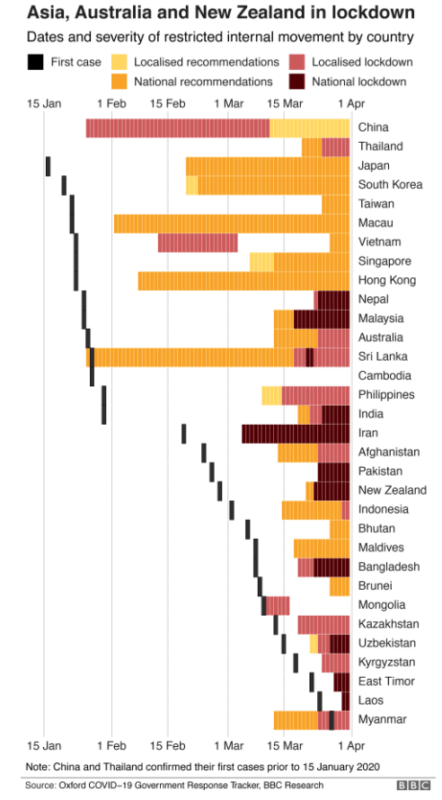
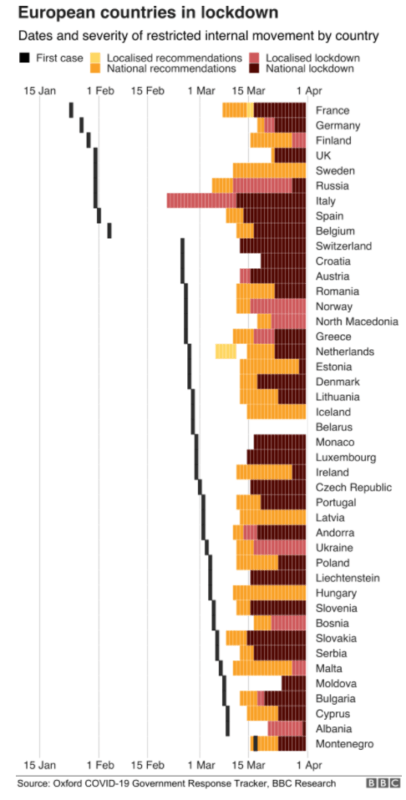
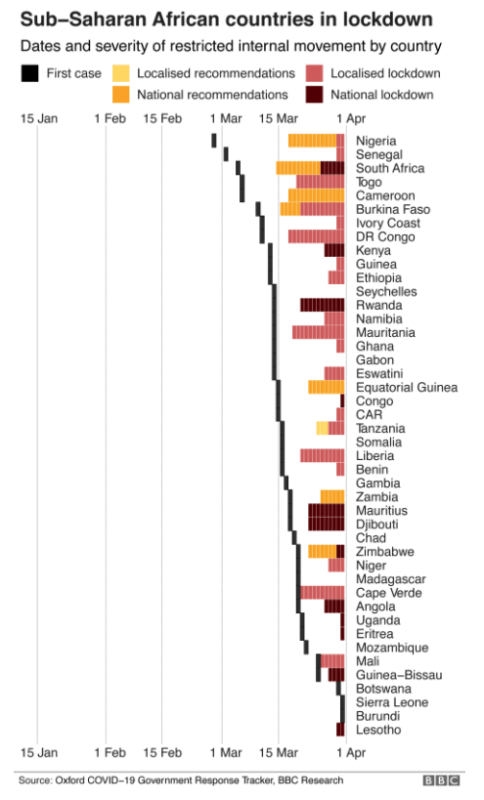
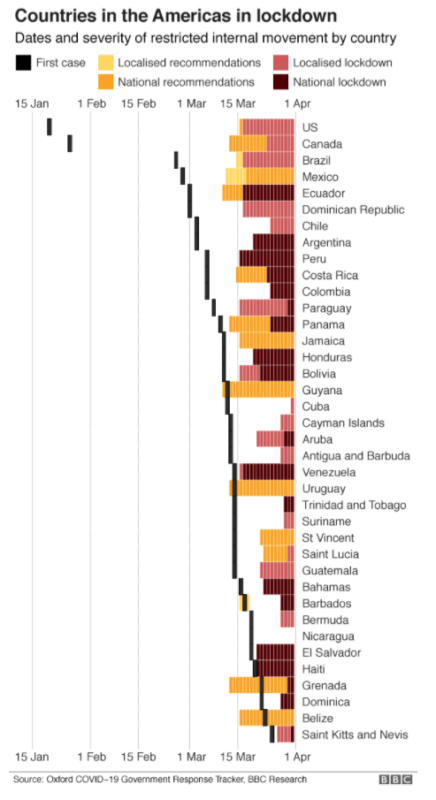
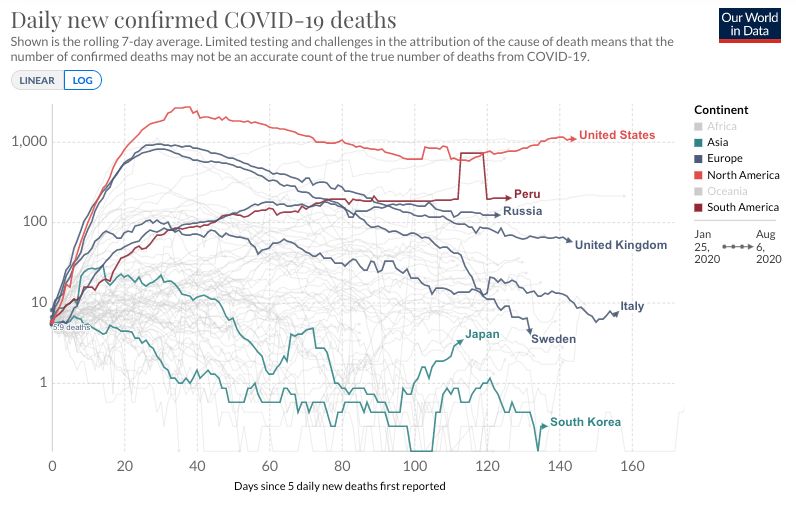
When comparing global lockdown responses with COVID-19 cases and deaths the results show little correlation between any of these factors. Sweden, which stayed relatively open, fared better than countries like Italy and the United Kingdom which implemented harsh lockdowns. The same goes for Latvia which had a moderate response to COVID-19 yet maintained some of the lowest cases and deaths. Gordon Sander writes the following about Latvia in Foreign Policy:
“There is no lockdown here—only a slowdown, and it is working. The mood in Riga isn’t exactly upbeat, but it isn’t grim. It is something else: The feeling of an ethnically divided country that is pulling itself together, perhaps for the first time.”
Countries like South Korea, Taiwan, and Japan are noted as success stories that not only minimized COVID deaths and infection but also stayed relatively open. The Atlantic reports that Hong Kong, a city where 7 million people basically rub shoulders on a daily basis, has managed the virus so well that
“It recently stopped calculating the dreaded R(t)—the real-time transmission rate of the coronavirus—because, of course, you cannot calculate transmission rates without new cases. Hong Kong never even had a full lockdown (although it closed schools, which it plans to reopen soon).”
Meanwhile, countries that implemented draconian lockdown measures such as the United States, the United Kingdom, and Italy did far worse. Some countries like Norway and Finland also implemented lockdown measures and did relatively well. The Diplomat highlighted this inconsistency regarding lockdown policies when it wrote
“Peru, on the other hand, emulated Brunei’s proactive tactics only to find itself becoming one of the countries worst hit by the coronavirus.”
According to the John Hopkins Coronavirus Resource Center, even within the United States results have been highly random as some states like South Dakota remained open while experiencing relatively few cases or deaths. States like New York, California, and Massachusetts have some of the heaviest restrictions but also some of the most cases as well as deaths.
States like Florida and Texas which remained relatively open are now also seeing an uptick in cases. Furthermore, results related to reopening have varied from country to country with some countries like India seeing a spike in cases while others like New Zealand are returning to normalcy. In short, there is far too much inconsistency associated with lockdowns to confidently claim they are an effective policy, especially given the terrible tradeoffs that come with them.
By examining the CDC data provided below we see very little correlation between lockdowns, cases, and deaths. The patterns are highly erratic and provide no clear evidence that states with strict lockdowns do better than those that are more open. At one point nursing home deaths totaled around 40% of COVID-19 deaths even though those residents made up less than 1% of the population. States like New York may have been able to drastically reduce their death counts by not forcing COVID-19 patients into nursing homes and instead finding other ways to improve hospital capacity.
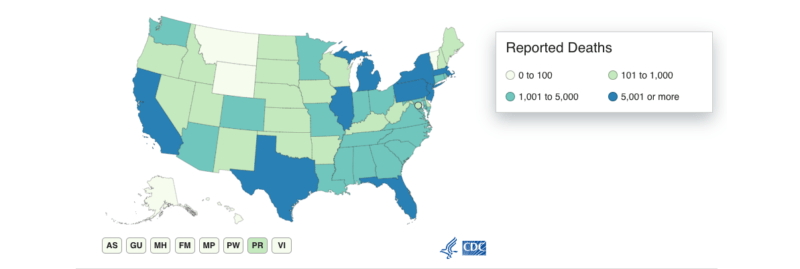
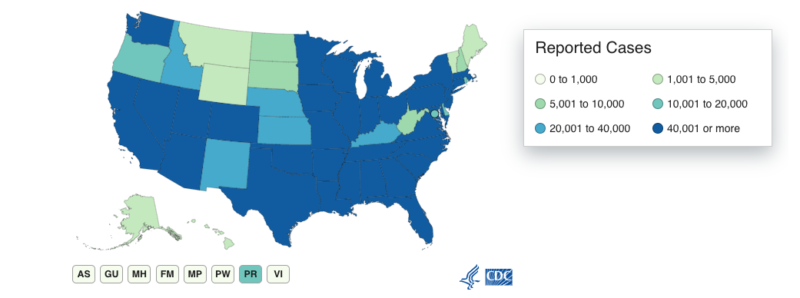
Furthermore, an extensive study published by The Lancet states
“Our findings propose avenues for further debate, research, and exploration, and do not support a definitive judgement on the effectiveness of various public health interventions implemented across different countries. The findings of this country level analysis on COVID-19 related health outcomes suggest that low levels of national preparedness, scale of testing, as well as population characteristics such as obesity, advanced age and higher per capita GDP are associated with increased national caseload and mortality.”
There is no definitive evidence to suggest that any policy can be seen as effective at really stopping the virus.
What Seems to Have Worked
The inconsistency associated with lockdown measures undermines the entire thesis of reinstating these draconian policies here in the United States. Luckily we have excellent counterfactuals that have not only shown that COVID-19 can be generally contained without ruining the economy but also what could be done besides a full lockdown.
There are certain recurring themes that make up a successful response to COVID-19, one that minimizes death without shutting down society. Although we cannot be sure that any specific combination of policies leads to any particular result, we can be confident that good information, policy flexibility, and increased hospital capacity gives a country the best fighting chance. Here are just a few countries that illustrate those points.
Taiwan
Taiwan has been hailed as the model response to COVID-19 as it has not only minimized its deaths and cases but also did so without shutting down society. Christine Chiou from the National Institute of Health writes that
“Taiwan is not only a beacon of democracy, but also living proof that control of an emerging virus can be achieved through science, technology, and democratic governance. No draconian autocratic measures are required.”
Taiwan and East Asia in general, have boasted excellent pandemic responses because of their experience with the SARS epidemic. Taiwan checks all the boxes when it comes to maintaining frequent testing, expanding hospital capacity, and overall mobilizing an agile government response.
Christine Chiou writes that
“As early as January, Taiwan’s government ramped up the production of face masks and other personal protective equipment (PPE) as well as critical medical supplies. Sophisticated plans have been mapped out to triage patients to better utilize negative pressure rooms in preparation for any surge of community-acquired patients.”
The result as she writes is
“Taiwan has managed to maintain a low case count through vigorous public health measures. There has not been any shut down of theaters, department stores, and, most importantly, schools although large gatherings are discouraged.”
Stanford professor Jason Wang writes in the Journal of the American Medical Association about another important prong of the Taiwanese response: accurate and transparent information communicated to the public. He writes
“Through early recognition of the crisis, daily briefings to the public, and simple health messaging, the government was able to reassure the public by delivering timely, accurate, and transparent information regarding the evolving epidemic. Taiwan is an example of how a society can respond quickly to a crisis and protect the interests of its citizens.”
Rather than simply gawking at the model response the Taiwanese have mounted in response to COVID-19, the United States should seek to emulate it. Implement frequent testing, transparent information, expanded hospital capacity, and an agile employment of targeted quarantines, not lockdowns.
South Korea
South Korea is another success story hailed as one of the model responses to COVID-19. Much like Taiwan, it is situated next to China, the epicenter of the outbreak. It still managed to contain the pandemic without closing its economy even though 80 percent of its population lives in urban areas. Its response was similar to Taiwan in that it employed frequent testing, expanded hospital capacity, and employed precise quarantine policies.
Its response to treatment and protecting the vulnerable was especially noteworthy as it clearly defined high-risk groups such as the elderly and those with underlying conditions while expanding hospital capacity. Our World in Data highlights an example when it writes
“During a shortage of hospital beds in the epicenter of Daegu, health officials developed a triage system using a Brief Severity Scoring System to classify patient illnesses as mild, moderate, severe, or critical. Mildly ill patients were sent to community treatment centers where they were closely monitored, moderately ill patients were sent to community hospitals, and severely or critically ill patients were hospitalized at tertiary hospitals equipped to provide intensive care.”
Expanding hospital capacity is essential not just to treat those who have contracted COVID-19 or other ailments. It also recognizes that we cannot eliminate the virus but we can soften its blow. Lockdown measures, in general, are not to be used to reduce the number of cases; they are to buy time for the healthcare system to adjust.
Latvia
Latvia is another interesting case that hasn’t been getting as much press as Taiwan or South Korea. Nonetheless, its response to COVID-19 has also been excellent at keeping deaths low while keeping its economy relatively open. Furthermore, Russia, which sits on its border, has some of the highest numbers of deaths and cases. Russia is also one of the many countries that instituted a lockdown. Latvia’s policy response was more heavy-handed than Taiwan’s but utilized the same principles. Foreign Policy writes
“One of Latvia’s experts is Uga Dumpis, an infectious disease specialist at Pauls Stradins Clinical University Hospital and one of the cabinet’s top advisors. Dumpis called Latvia’s carefully calibrated, relatively unrestrictive response “one of the freest in Europe.”
One item of note is that
“Its underfunded health care system, which includes a number of Soviet-era facilities, could hardly be called state-of-the-art. Moreover, many staff are over the age of 65 and there are too few nurses…”
Health Minister Ilze Vinkele reported on March 19 that Latvia had 450 ICU beds, with 1,500 additional beds that can be retrofitted as ICU units—but even that is nowhere near enough to handle an outbreak the size of Italy’s or Spain’s. At first, personal protective equipment for medical staff was in short supply but the government enlisted the Ministry of Defense’s logistics team to expedite procurement of such equipment.”
Increasing hospital capacity gives society more flexibility and a chance to handle the worst cases whether it’s COVID-19 or another disease. Lockdowns take away both of those benefits.
Make Decisions Based in Evidence
The idea of closing down society with draconian lockdown policies is an experimental concept that is not based in reality. They are tools to be considered to slow the spread of cases so that hospitals can prepare and should not be viewed as a way to eliminate the virus. Never before has any pandemic been countered by shutting down all of society. The problems associated with such a policy quickly outweigh any of the marginal benefits. Furthermore, preventing cases is far more difficult than preventing deaths. In fact, it may be near impossible given how contagious the virus is and how lockdowns have had little effect while decimating society. A better response would be mitigating deaths and severe cases by focusing on increasing hospital capacity. That is something that we can actually control. Attempting to control a force of nature is not something that can be done easily, if at all. Support a proper response by empowering the healthcare sector, not politicians and bureaucrats. It is foolish to attempt to solve a medical problem with politics.
This article should not be construed to suggest that countries like Taiwan and South Korea should be copied or emulated in their entirety. Current events continue to shift and the efficacy of individual policies such as contact tracing and movement restrictions is still subject to debate. As leaders consider resetting lockdown measures across the United States, we must understand that our entire response to COVID-19 was flawed. It has not only been counterproductive but it is also not based on any sort of evidence. For months we have hailed countries like Taiwan and South Korea for their model responses that kept the virus at bay while inflicting relatively minimal restrictions on society. Advocating for draconian lockdown measures while still praising these countries is not only blind to the evidence but also comes from a position of privilege and hypocrisy.

